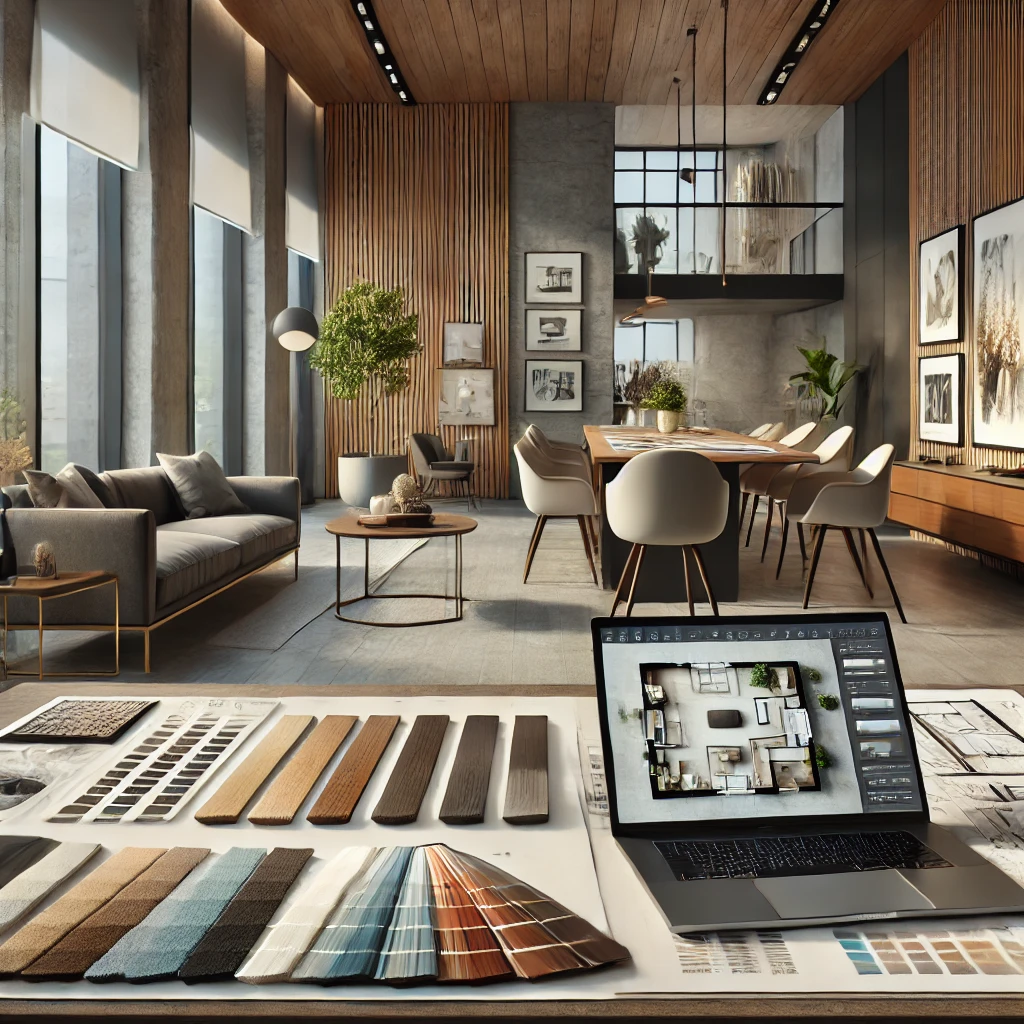
When pitching budgets to clients in the initial stages of an interior design project, it’s crucial to find a balance between transparency and adaptability. Presenting a well-thought-out budget early on not only establishes trust but also sets realistic expectations for both parties. Here’s how to structure your budget presentation while keeping it informative and tailored to the client’s needs.
1. Grasp the Client’s Vision
Before discussing costs, ensure that you fully understand the client’s expectations, preferences, and the project’s overall scope. This alignment allows you to craft a budget that mirrors their vision, reducing the chances of any surprises later on.
2. Offer a Flexible Range
Rather than quoting a single number, offer a range that factors in various elements such as materials, finishes, and customization levels. For example, the total cost could range from ₹X to ₹Y, depending on whether the client opts for premium materials or more economical solutions.
3. Break Down the Numbers
Clients appreciate transparency, so provide a detailed breakdown of costs. Divide the budget into the following categories:
- Design fees (for conceptual designs, 3D visualizations, etc.)
- Furniture and fixtures (custom pieces or ready-made)
- Material expenses (flooring, paint, upholstery, etc.)
- Labor and installation charges
- Project management fees (if applicable)
By organizing the budget into these components, clients can see exactly where their investment is going.
4. Identify Key Cost Drivers
Make sure the client understands which elements have the biggest impact on the budget. This could include high-end finishes, imported materials, or extensive customizations. By highlighting these cost drivers, you help the client make more informed decisions.
5. Include a Contingency Buffer
Always advise your clients to set aside a contingency budget, typically around 10-15%, to cover any unexpected expenses or design changes that arise during the project.
6. Present with Professionalism
The way you present the budget is just as important as the numbers themselves. Use a clean, well-organized format—such as a presentation or a proposal document—that clients can easily follow. This enhances your credibility and professionalism, making it easier for them to visualize their investment.
7. Stay Open to Adjustments
While you should be firm in your pricing, it’s important to remain open to negotiation. Be willing to discuss alternative materials or design solutions that fit within the client’s budget without sacrificing quality.
8. Calculate the Budget: A Simple Formula
For a more straightforward estimate, you can use the following formula:
Budget = Total square footage of the project × Rate per square foot
Rates vary based on the client’s preferences:
- Low-budget projects typically range from ₹3,000 to ₹4,500 per square foot.
- Mid-range projects fall between ₹5,000 and ₹6,500 per square foot.
- High-end projects can go from ₹8,000 to ₹10,000 per square foot or more.
For example, if you’re designing a 1,000 sq. ft. space and the client prefers a mid-range budget, you would multiply 1,000 sq. ft. by ₹6,000, giving you a total estimated budget of ₹60,00,000 (60 lakhs).
9. Add Value Through Customization
Tailor your proposals to the client’s specific needs, including personalized recommendations and alternate solutions to optimize their budget. This shows you’re invested in creating a design that works for them, no matter their price range.
Note: The rate per square foot can be adjusted based on your specific clientele and their requirements. Luxury clients may seek more exclusive materials and finishes, pushing the rate to the higher end, while budget-conscious clients might prefer more economical solutions. Always align the budget with the client’s preferences and expectations.
By being transparent, offering a detailed breakdown, and using a flexible approach, you can establish a solid foundation of trust and understanding with your clients. This method not only ensures smoother project execution but also positions your firm as a professional and client-centric partner.
Want more insights on budget-friendly designs and client satisfaction? Follow our blog for expert tips from Dimora Designz!
Stay Inspired! Follow us on Instagram https://www.instagram.com/dimoradesignz for the latest trends, design tips, and project showcases.
